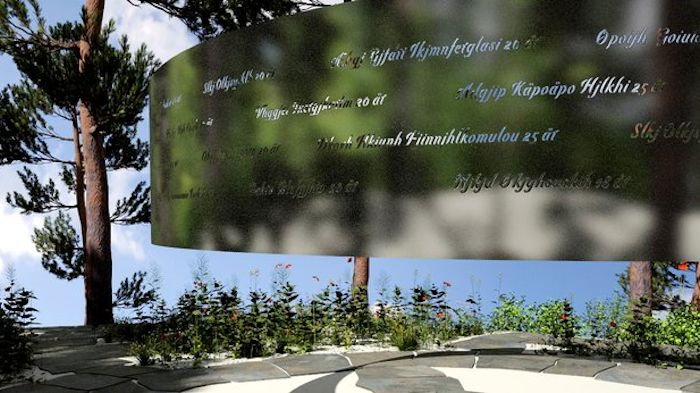Anders Breivik and the July 22 Norway Massacre: A Chronology

February 13, 1979
Anders Behring Breivik is born in Oslo.
1991
Breivik’s parents divorce.
1995
Breivik is fined for spraying graffiti on walls.
1995 to 2002
Breivik is active in the culturally conservative Norwegian Progress Party, which favors restrictions on immigration.
Spring 2002
Breivik drops out of the Progress Party after “losing faith in the democratic struggle to save Europe from Islamification.” He decides the only path forward for his political vision is armed struggle.
2002-2005
Breivik seeks to accumulate sufficient funds to support his plans for right-wing extremism, including the publication of a book and a possible “martyrdom operation.”
2006-2008
Breivik researches and begins writing his compendium: “A European Declaration of Independence”
Autumn – 2009
With his compendium complete, Breivik shifts to “the next phase” and creates prospectuses for business ventures (a mining company and a farming operation) that will be a cover for his purchasing and smuggling of explosives and explosive components.
March 2010
Breivik completes his project of “email farming”: collecting the email addresses of about 8,000 people he intends to send his massive compendium to at some future date.
August 2010
Breivik completes the “armor acquisition” phase of his project, acquiring all the protective gear he intends to use during his martyrdom operation. He moves on to the next phase, the “weapon research and acquisition phase.”
September 2010
After submitting applications for firearms to use in his operations, Breivik moves on to the “explosives research phase.”
October-December 2010
Breivik begins ordering and acquiring various chemicals and explosive components that he intends to use for a bomb. He also purges his hard drive and stores all sensitive information externally.
February 2011
Breivik creates a 12.5 minute movie trailer promoting his compendium. He begins thinking about how he might exploit a trial if he survives his martyrdom operation and is arrested.
April 10, 2011
Breivik signs the lease for a farm about 2.5 hours outside of Oslo, which he plans to use to construct explosive devices.
May 2, 2011
Breivik, with all his gear and chemicals, moves into the farm south of the town of Asta He tells people the farm will be used for a sugar beet operation.
June 10, 2011
Breivik test lights his explosive mix for the first time, but nothing happens.
June 13, 2011
After making some adjustments, Breivik again tests his explosive device. This time it detonates.
July 2, 2011
Breivik goes over the travel route for his planned operations A (a bombing in the government quarter in Oslo) and B (a mass shooting operation on Utoya Island, where the AUF (Worker’s Party) will be holding a youth camp.
July 15, 2011
Breivik takes a train to Oslo and picks up the rental van that he will park, and then explode, in front of the government center a week later. He returns to the farm late at night.
July 22, 2011
Breivik detonates a fertilizer bomb outside the tower block housing in the government quarter of Oslo, killing 8 people. He then travels to Utoya Island, where he shoots 69 people at a camp for the Worker’s Youth League. He is arrested and interrogated through the night.
July 25, 2011
Breivik is charged with violating Section 147a of the Norwegian Criminal Code, its anti-terrorism provision. Over the next months, he will be interviewed and examined by court-appointed psychiatrists.
March 2012
Breivik is formally indicted.
April 16, 2012
Breivik’s trial opens in Oslo District Court.
August 24, 2012
Breivik is found sane and guilty of murdering 77 people. He is sentenced to 21 years in prison, a sentence that could be extended in five year increments if he is still seen as posing a danger to the public. He is imprisoned at Telemark Prison, about 60 miles southwest of Oslo.

Summer 2015
A place of memorial called Lysinga ("the clearing") is unveiled at the highest point on Utoya Island. It includes a ring of steel with the names of the 69 shooting victims engraved. The 22 July Centre, a museum about the 22 July events, opens in Oslo.
2016
Breivik sues the Norwegian Correctional Service, complaining that his solitary confinement was a violation of human rights laws.
Summer 2016
A place of memorial called Lysinga ("the clearing") is de
2017
Breivik changes his legal name to Fjotolf Hansen.
June 2018
The European Court of Human Rights dismisses Breivik’s case against the Norwegian Correctional Service.
February 1, 2022
A Norwegian court rules that Breivik poses "an obvious risk" to society and must remain in prison. At his parole hearing the previous month, Breivik flashed Nazi salutes, but said he now renounces violence.++++++++++++++++
